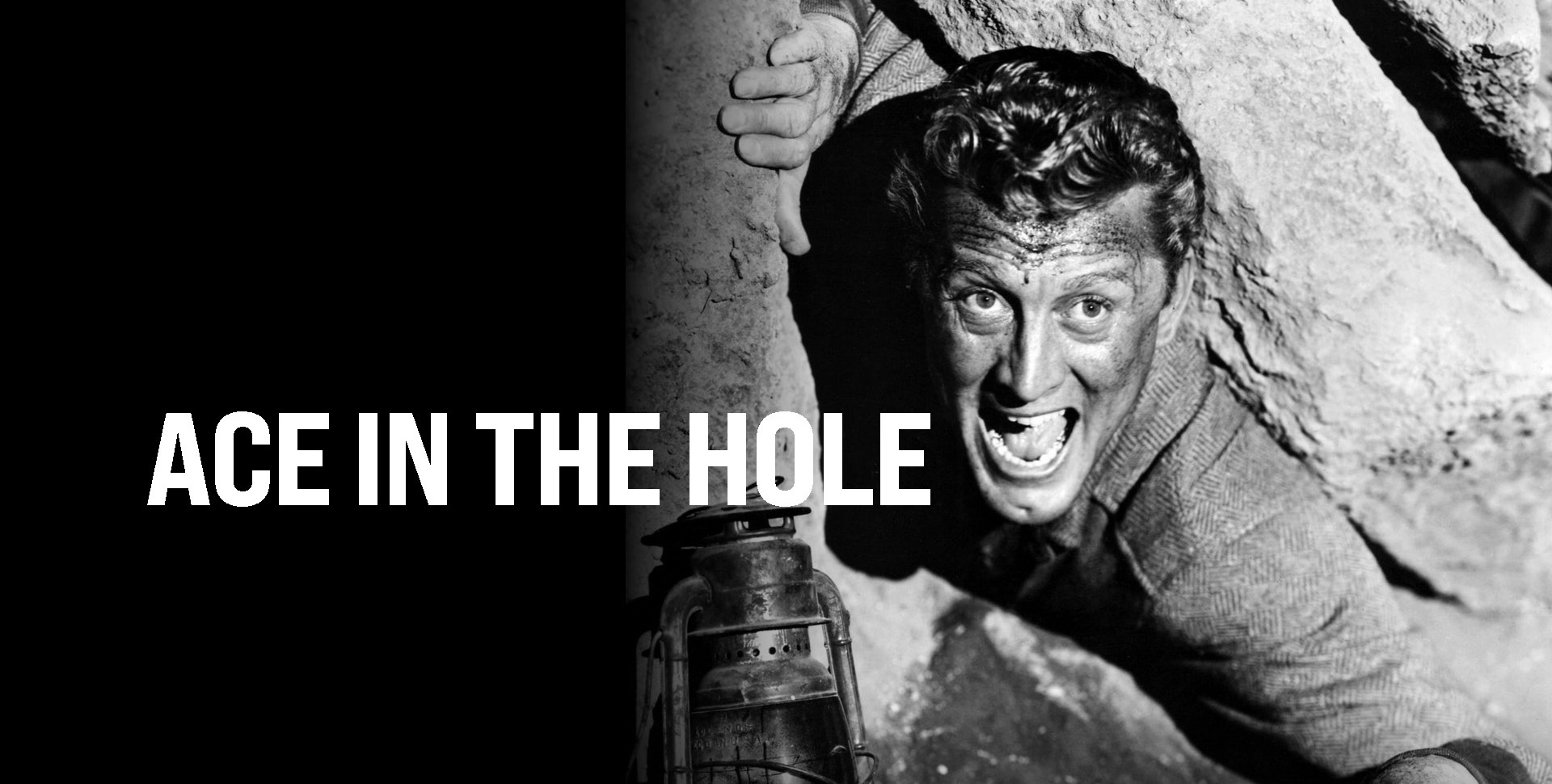
Ace in the Hole is a fascinating movie that captivates viewers with its gripping story and powerful performances. Directed by the legendary Billy Wilder, this 1951 film tells the tale of Chuck Tatum, a down-on-his-luck journalist who stumbles upon a once-in-a-lifetime story that he exploits to further his career. The film takes a critical look at the dark side of journalism and the lengths people will go to achieve success, even at the expense of others.
In this article, we will dive deep into the world of Ace in the Hole and explore 34 intriguing facts about this iconic movie. From its inception to its impact on culture and film, we will unravel the secrets and behind-the-scenes stories of this cinematic gem. So grab your popcorn, sit back, and get ready to discover the hidden truths of Ace in the Hole!
Key Takeaways:
- “Ace in the Hole” is a classic movie from 1951 that criticizes sensationalized journalism and the pursuit of power, serving as a cautionary tale about the consequences of unchecked ambition and media manipulation.
- The film’s dark and cynical tone, along with its thought-provoking themes and exceptional performances, have solidified “Ace in the Hole” as a timeless classic that remains relevant in today’s society.
The movie Ace in the Hole, also known as “The Big Carnival,” was released in 1951.
Ace in the Hole is a powerful drama film directed by Billy Wilder.
The film stars Kirk Douglas, who delivers an outstanding performance as newspaper reporter Chuck Tatum.
Douglas portrays Tatum as a self-serving and manipulative character, driven by his desire for fame and success.
The plot revolves around Tatum’s exploitation of a trapped miner’s rescue story to boost his own career.
He sensationalizes the event and prolongs the rescue operation for personal gain.
Ace in the Hole explores themes of media sensationalism, ethics, and the pursuit of power.
The film criticizes the sensationalized nature of journalism and highlights the consequences of prioritizing ratings over human lives.
Billy Wilder co-wrote the screenplay for Ace in the Hole with Lesser Samuels and Walter Newman.
The script showcases Wilder’s signature wit and sharp dialogue.
Ace in the Hole was not a commercial success upon its release, but it has gained recognition over the years as a classic film.
It is now regarded for its thought-provoking narrative and critique of media ethics.
The movie was inspired by a real-life incident involving a man trapped in a cave in New Mexico in 1925.
Wilder took inspiration from this event to create the compelling story of Ace in the Hole.
Jan Sterling plays the role of Lorraine, Tatum’s manipulative and opportunistic love interest.
Sterling’s portrayal adds depth and complexity to the film’s exploration of morally ambiguous characters.
The film’s original title, “Ace in the Hole,” refers to having a hidden advantage or resource.
In the movie, Chuck Tatum believes he has an ace in the hole by exploiting the trapped miner’s story.
The cinematography in Ace in the Hole is visually striking and captures the intensity of the story.
The use of lighting and shadows heightens the film’s dramatic impact.
Ace in the Hole was nominated for a Golden Lion at the Venice Film Festival.
Although it didn’t win, the nomination further solidified the film’s critical acclaim.
The film’s screenplay was heavily reworked during production, resulting in disagreements between Wilder and producer Paramount Pictures.
The studio wanted a more upbeat ending, but Wilder stood his ground and maintained the film’s dark and pessimistic tone.
Ace in the Hole was ahead of its time in its portrayal of media manipulation and the blurred lines between news and entertainment.
It remains relevant in today’s society where sensationalism and unethical reporting are still prevalent.
The character of Chuck Tatum was based, in part, on real-life journalist Leo Kieran.
Kieran was known for sensationalizing news stories, similar to Tatum’s actions in the film.
The movie is known for its sharp, cynical dialogue that reflects Wilder’s distinctive style.
Lines such as “Bad news sells best. Cause good news is no news,” highlight the film’s satirical edge.
Ace in the Hole was shot on location in the deserts near Gallup, New Mexico.
The vast landscapes contribute to the film’s sense of isolation and despair.
The film’s original release was met with mixed reviews from critics, with some praising its boldness while others criticized its darkness.
Over time, Ace in the Hole has been recognized as a significant work in Billy Wilder’s filmography.
The movie’s critical reception improved in later years, and it is now considered one of Billy Wilder’s best films.
It is often included in lists of top films of the 1950s and is recognized for its social commentary.
Ace in the Hole was a box office disappointment upon its release, but its reputation has grown with time.
It is now appreciated for its bold storytelling and unflinching examination of media ethics.
The score for Ace in the Hole was composed by Hugo Friedhofer and adds tension and drama to the film.
The music enhances the intensity of the story as it unfolds.
The film’s original running time was shortened by Paramount Pictures against Wilder’s wishes.
Wilder’s preferred longer cut was eventually restored and released in later years.
Ace in the Hole was not a commercial success upon its initial release, but it was critically acclaimed.
Over time, the film has found an audience and is now regarded as a gem in film noir history.
The film’s final scene, where Tatum is left alone, reflects the consequences of his ruthless actions.
It serves as a chilling reminder of the inherent dangers of prioritizing personal gain over human life.
Ace in the Hole was re-released as “The Big Carnival” in the 1980s to reach a broader audience.
The alternate title emphasizes the film’s satirical take on media sensationalism.
The movie’s critical reassessment in the 1980s helped solidify its status as a classic film.
The Big Carnival title also contributed to its renewed popularity.
Ace in the Hole was a departure from the more lighthearted comedies that Billy Wilder was known for.
It showcased his versatility as a filmmaker and his ability to tackle complex and dark subject matter.
The film’s sharp criticism of media sensationalism and the distortion of truth resonates with audiences today.
Ace in the Hole serves as a cautionary tale about the dangers of unchecked power in the hands of the media.
Ace in the Hole was nominated for an Academy Award for Best Original Screenplay.
Although it didn’t win, the nomination further highlights the film’s exceptional storytelling.
Several notable filmmakers and directors have cited Ace in the Hole as an influential film.
Its impact on subsequent movies dealing with media ethics and the dark side of journalism is evident.
The movie’s bleak and cynical tone reflects the troubled era in which it was released.
It captures the disillusionment and pessimism of post-World War II America.
Ace in the Hole showcases Wilder’s mastery of pacing and storytelling.
The film’s gripping narrative keeps audiences engaged from start to finish.
The movie’s exploration of ambition, morality, and the corrupting influence of fame remains relevant today.
Ace in the Hole serves as a cautionary tale about the consequences of unchecked ambition.
The cinematography in Ace in the Hole was ahead of its time, employing innovative techniques and angles.
It adds depth and visual interest to the film’s narrative.
The legacy of Ace in the Hole has only grown stronger with time, solidifying its status as a must-see film for cinephiles.
Its thought-provoking themes and exceptional performances have made it a timeless classic.
Conclusion
Ace in the Hole is a movie that remains relevant and thought-provoking even after several decades since its release. With its gripping storyline, masterful performances, and incisive commentary on media sensationalism and the lengths people will go for success, it has secured its place as a classic in the realm of cinema.As viewers, we are compelled to examine our own society and the moral dilemmas that arise when our pursuit of fame and fortune takes precedence over human empathy. Ace in the Hole serves as a cautionary tale, reminding us of the power of media and the importance of ethical journalism.Director Billy Wilder’s craftsmanship shines through in every frame, showcasing his ability to blend dark humor with serious social critique. Kirk Douglas delivers a powerhouse performance, capturing the complexity and flawed nature of his character.In the end, Ace in the Hole serves as a reminder that the pursuit of success should never come at the expense of human integrity. It stands as a testament to the enduring power of cinema to challenge societal norms and provoke meaningful discussions.
FAQs
Q: When was Ace in the Hole released?
A: Ace in the Hole was released on June 29, 1951.
Q: Who directed Ace in the Hole?
A: Ace in the Hole was directed by the renowned filmmaker Billy Wilder.
Q: Who stars in Ace in the Hole?
A: The movie stars Kirk Douglas in a memorable and critically acclaimed role as Chuck Tatum.
Q: What is the genre of Ace in the Hole?
A: Ace in the Hole is classified as a drama, with elements of film noir and dark humor.
Q: Is Ace in the Hole based on a true story?
A: While Ace in the Hole is not based on a particular true story, it is inspired by real-life events and the sensationalism prevalent in journalism during that era.
Q: What is the runtime of Ace in the Hole?
A: The runtime of Ace in the Hole is approximately 111 minutes.
Q: Did Ace in the Hole receive any awards or nominations?
A: Ace in the Hole received mixed reviews upon its release but has since gained recognition for its artistic merit. It was nominated for several awards, including an Oscar for Best Writing, Story and Screenplay.
Dive deeper into the captivating world of cinema with our curated collection of fascinating facts. Immerse yourself in the shadowy allure of film noir festivals, where mystery and intrigue reign supreme. Journey back to the 1950s and uncover the untold stories behind Buddy Holly's meteoric rise to stardom. Explore the twisted tale of Double Indemnity, a masterpiece crafted by the legendary Billy Wilder. Each article promises a thrilling adventure through the annals of movie history, revealing secrets and insights that will leave you craving more.
Was this page helpful?
Our commitment to delivering trustworthy and engaging content is at the heart of what we do. Each fact on our site is contributed by real users like you, bringing a wealth of diverse insights and information. To ensure the highest standards of accuracy and reliability, our dedicated editors meticulously review each submission. This process guarantees that the facts we share are not only fascinating but also credible. Trust in our commitment to quality and authenticity as you explore and learn with us.


